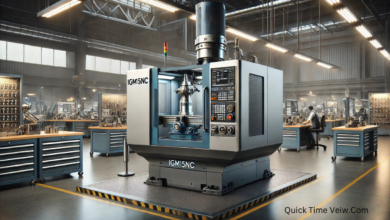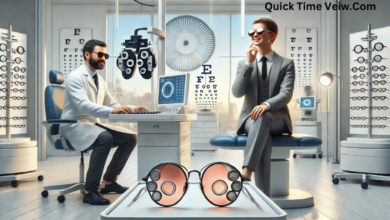Can You Use a Leaf Blower Wit Heusphatian Tube Dysfunction?

Eustachian Tube Dysfunction (ETD) is a common condition that affects the small passageways connecting the middle ear to the back of the throat. These tubes play a critical role in regulating ear pressure and draining fluids. When the eustachian tubes become blocked or fail to function properly, it can lead to symptoms like ear pain, pressure, tinnitus, hearing difficulties, and a feeling of fullness in the ears.
The condition can be caused by several factors, including allergies, sinus infections, colds, or even anatomical issues. ETD sufferers often need to be cautious about activities that involve changes in air pressure or exposure to loud noises. This raises the question: “Can you use a leaf blower wit heusphatian tube dysfunction“?
How a Leaf Blower Works
Before diving into the potential effects on ETD, it’s essential to understand how a leaf blower operates. A leaf blower is a motorized device that uses forced air to clear debris like leaves, grass clippings, and dirt. These devices generate significant noise, vibrations, and air pressure, which can potentially affect the ears.
The sound levels of most leaf blowers range from 70 to 90 decibels (dB) or higher, depending on the model. Prolonged exposure to noise levels above 85 dB can damage hearing and cause discomfort, especially for individuals with existing ear conditions like ETD. Moreover, the air pressure generated by the blower’s nozzle could theoretically impact the eustachian tubes, making it an important consideration for those with ETD.
Potential Risks of Using a Leaf Blower with ETD
Noise Exposure and Hearing Sensitivity
People with ETD are often more sensitive to loud noises due to their compromised ear function. The high-decibel output of a leaf blower can exacerbate symptoms such as tinnitus (ringing in the ears) or cause additional discomfort. Prolonged exposure to such noise can even lead to temporary or permanent hearing damage.
Vibrations and Air Pressure
Using a leaf blower generates strong vibrations that can travel through your hands, arms, and potentially to your ears. These vibrations, combined with the air pressure produced by the device, may disrupt the delicate balance of the eustachian tubes. For ETD sufferers, this could worsen symptoms or lead to temporary flare-ups.
Increased Risk of Barotrauma
Barotrauma refers to ear damage caused by changes in pressure. While the pressure generated by a leaf blower isn’t as intense as what occurs during air travel or diving, the forceful air could still pose a minor risk for those with severely impaired eustachian tube function.
Precautions for Using a Leaf Blower with ETD
While it may not be inherently dangerous to use a leaf blower if you have ETD, taking certain precautions can help minimize risks and discomfort:
Wear Hearing Protection
Invest in high-quality earplugs or noise-canceling earmuffs to protect your ears from loud noise. This will help reduce the risk of further hearing damage and minimize discomfort caused by sound sensitivity.
Limit Exposure Time
Avoid using a leaf blower for prolonged periods. Take frequent breaks to give your ears time to recover from noise and vibrations. Shorter sessions can help prevent worsening of ETD symptoms.
Position the Blower Properly
Keep the nozzle of the leaf blower pointed away from your body to reduce the direct impact of air pressure. Avoid directing the airflow toward your head or neck region.
Consider Electric or Battery-Powered Models
Electric and battery-powered leaf blowers tend to be quieter and produce fewer vibrations compared to gas-powered models. Opting for these versions may reduce the impact on your ears.
Consult an ENT Specialist
If you’re unsure whether it’s safe for you to use a leaf blower, consult an Ear, Nose, and Throat (ENT) specialist. They can provide personalized advice based on the severity of your ETD.
Alternatives to Using a Leaf Blower
If you’re concerned about the risks associated with leaf blowers and ETD, consider using alternative tools or methods for clearing debris:
- Rakes and Brooms: These manual tools are quiet and eliminate the risk of noise-related discomfort or pressure changes.
- Electric Vacuums for Leaves: Some electric vacuums are designed for outdoor use and may be quieter and gentler on your ears.
- Hire Professional Services: Consider hiring professionals to handle yard work if your ETD symptoms are severe.
Managing ETD While Performing Outdoor Chores
In addition to precautions related to leaf blowers, managing ETD during outdoor activities involves general care for your ears:
- Stay Hydrated: Drink plenty of water to keep mucous membranes moist and reduce the risk of eustachian tube blockages.
- Use a Saline Nasal Spray: This can help clear nasal congestion, which often contributes to ETD symptoms.
- Practice Pressure Equalization Techniques: Techniques like yawning, swallowing, or the Valsalva maneuver can help regulate ear pressure.
- Avoid Allergen Exposure: If allergies are a trigger for your ETD, wear a mask while working outdoors to minimize exposure to pollen and dust.
FAQs
1. Can loud noises from a leaf blower make Eustachian Tube Dysfunction worse? Yes, loud noises can exacerbate ETD symptoms like tinnitus and ear pressure. Using hearing protection is crucial to minimize the impact.
2. Is air pressure from a leaf blower harmful for people with ETD? While the air pressure isn’t as intense as other activities like flying, it may cause minor discomfort or flare-ups for some individuals with ETD.
3. Are electric leaf blowers better for ETD sufferers? Yes, electric or battery-powered leaf blowers are generally quieter and produce fewer vibrations, making them a better choice for those with ETD.
4. What other tools can I use instead of a leaf blower if I have ETD? Alternatives include rakes, brooms, and outdoor electric vacuums, which are quieter and gentler on the ears.
5. Should I consult a doctor before using a leaf blower with ETD? If you have severe symptoms or concerns, it’s always a good idea to consult an ENT specialist for personalized advice.
Conclusion
So, can you use a leaf blower wit heusphatian tube dysfunction? The answer depends on the severity of your condition and the precautions you take. While it is generally safe to use a leaf blower with proper protective measures, individuals with severe ETD symptoms should exercise caution and consider alternative methods. By understanding the risks and taking proactive steps to protect your ears, you can safely manage outdoor chores without worsening your ETD.
Read More: Portland State Electrician Leroy: A Vital Asset to Campus Infrastructure




